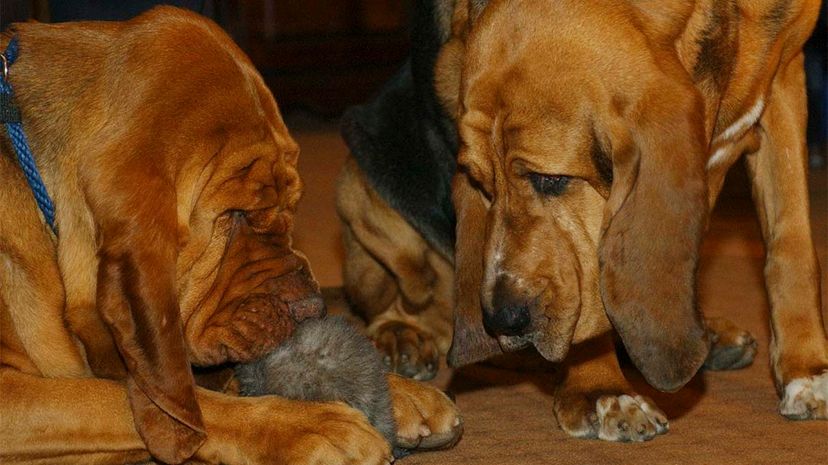 “Scent dogs like bloodhounds have super long ears that act as catcher’s mitts, scooping up invisible scent particles on the trail and sweeping them towards the nose. Tom William /Getty images
“Scent dogs like bloodhounds have super long ears that act as catcher’s mitts, scooping up invisible scent particles on the trail and sweeping them towards the nose. Tom William /Getty images
When convicts Richard Matt and David Sweat decided to pull a "Shawshank Redemption" in 2015 and tunnel out of the Clinton County Correctional Facility in upstate New York, a 2-year-old bloodhound named Ginney was hot on their trail.
Working with James Pendolino from the Rensselaer County, N.Y. Search and Rescue team, Ginney and a number of other canines used their noses during the June manhunt to scour the vast Adirondack region hoping to pick up the escapees’ scent. "They never make a sound on the trail," Pendolino said of bloodhounds in an interview with an Albany, New York, television station. "All this loose skin helps hold the scent."
Bloodhounds, with their floppy skin and gangly ears, are the quintessential tracking dogs, and there’s good reason. While all types of dogs, including German shepherds and Labrador retrievers, can sniff out convicts, cadavers and victims of disasters, the dogs with floppy ears seem to be the best at what they do.
For one thing, regardless of breed, dogs have amazing noses. With more than 220 million olfactory receptors, experts say a dog’s sense of smell is thousands of times more sensitive than a human’s. Moreover, dogs with floppy ears, such as bloodhounds, coon hounds, Bassett hounds and others are exceedingly good trackers.
That’s because their long ears act as catcher’s mitts, scooping up invisible scent particles on the trail and sweeping them toward the nose. The scent particles also get trapped in the folds of wrinkly skin allowing the dog to carry reference samples as they hunt. Long ears also tamp down a dog’s ability to hear far-off sounds, forcing the dogs to rely more on their sense of smell.
NOW THAT’S INTERESTING
In 2009, researchers at Pennsylvania State University created a computer model of a canine’s nose to better understand how dogs smell. They reported in the Journal of the Royal Society Interface that each nostril pulls in air about five times every second. The dog, it seems, knows which nostril is pulling in the scent, allowing them to turn right or left when tracking. Moreover, receptors continue to hold on to scent molecules even after the dog exhales.

